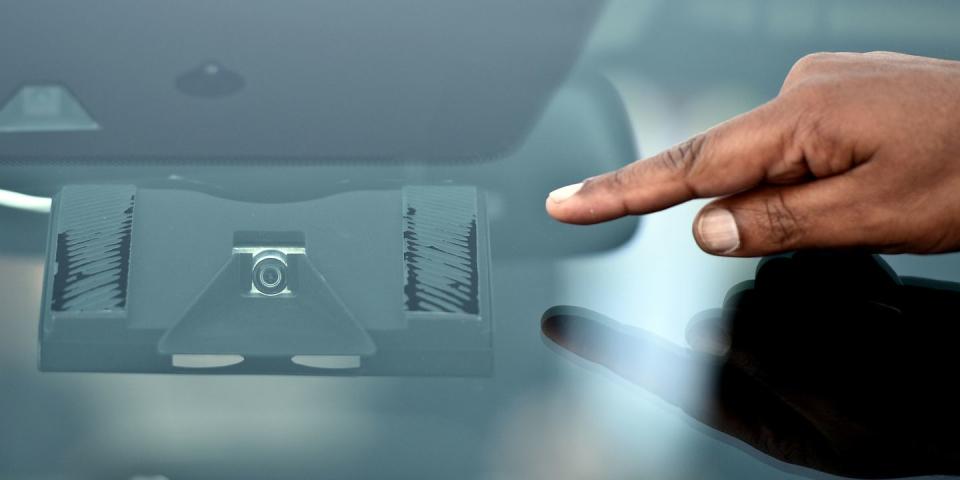Advanced Active-Safety Systems Could Cost You Big in Repairs, AAA Reports

Driver-assistance systems promising to steer, brake, and warn drivers of potential crashes are a double whammy. According to a new report from AAA, not only do they cost a lot to buy new, they cost just as much-if not a lot more-to replace in an accident.
The 59-million-member organization, reviewing parts and labor costs for three of the highest-selling vehicles, estimates these systems can add thousands of dollars to repair bills. It’s not a far-fetched hypothesis. While cars with onboard cameras, radar, and ultrasonic sensors have become more affordable, its remain more expensive for automakers to develop and install technology on than cars without them. So even if you’ve only chipped a windshield or bashed a bumper, chances are you’ll be replacing these sensitive, fragile components lying underneath.
Radar sensors embedded in rear bumpers, such as those used for blind-spot monitoring, can cost anywhere from $850 to $2050 to replace. Front radar sensors, typically mounted behind grilles and within the bumper, tend to cost $900 to $1300. Do you like how your car beeps at you when you approach a curb? Parking sensors ring up $500 to $1300 per bumper to replace. Visual cameras are slightly cheaper, at $500 to $1100, but that depends how many you’ve hit.
Windshields can be trickier to replace. Aftermarket glass goes for $1200 to $1600-that’s roughly three times the price of an ordinary windshield-and even then, it could render basic features useless. Automatic wipers typically use infrared cameras to detect water droplets on the glass, while head-up displays require special reflective coatings in order to project clearly. John Paul, AAA’s public affairs manager, told Car and Driver that these features, plus any camera- and radar-based sensors mounted behind the glass, aren't guaranteed to work with aftermarket windshields, which may not have the required coatings or polymers between the glass layers.
To get its snapshot of average costs, AAA selected 2018 models of the Ford F-150, the Toyota Camry, and the Nissan Rogue, all of which offer or come standard with most of these systems. Parts were quoted at factory MSRP and windshields were quoted at both factory and aftermarket prices. Labor rates were based on national averages from AAA's approved repair shops and National Auto Body Research, with labor hours based on guidance from independent repair shops and franchise dealerships. Just think what these same quotes would be for a Mercedes-Benz or any number of other luxury brands. Yeah, we don't want to, either.
While independent shops can technically handle these repairs, they may not be equipped to reprogram a car's sensors like a franchised dealer. That's because automakers can charge these shops extremely high fees for specific tools and access to service computers, which makes it nigh impossible to profit on such work. That means taking a second trip to the dealership or risk your new parts---or unrelated but linked electrical components, like seats---malfunctioning.
“Even a backup camera has to be calibrated,” Paul told C/D.
High-deductible insurance policies can also come back to bite if you're not prepared to spend. According to AAA, one in three Americans report they can't afford repair costs as low as $500. But shouldn't insurance companies lower the premiums for cars with such advanced safety features, as they do for cars with airbags and ABS? Unfortunately, since these systems are still unproven, higher rates are already "baked into the car," Paul told us.
"While these cars could be doing remarkable things preventing crashes, nobody reports that," he said. "Until you can get more data to prove that these systems are actually reducing crashes, all you can do is look what it costs to fix it."
('You Might Also Like',)

 Yahoo Autos
Yahoo Autos 